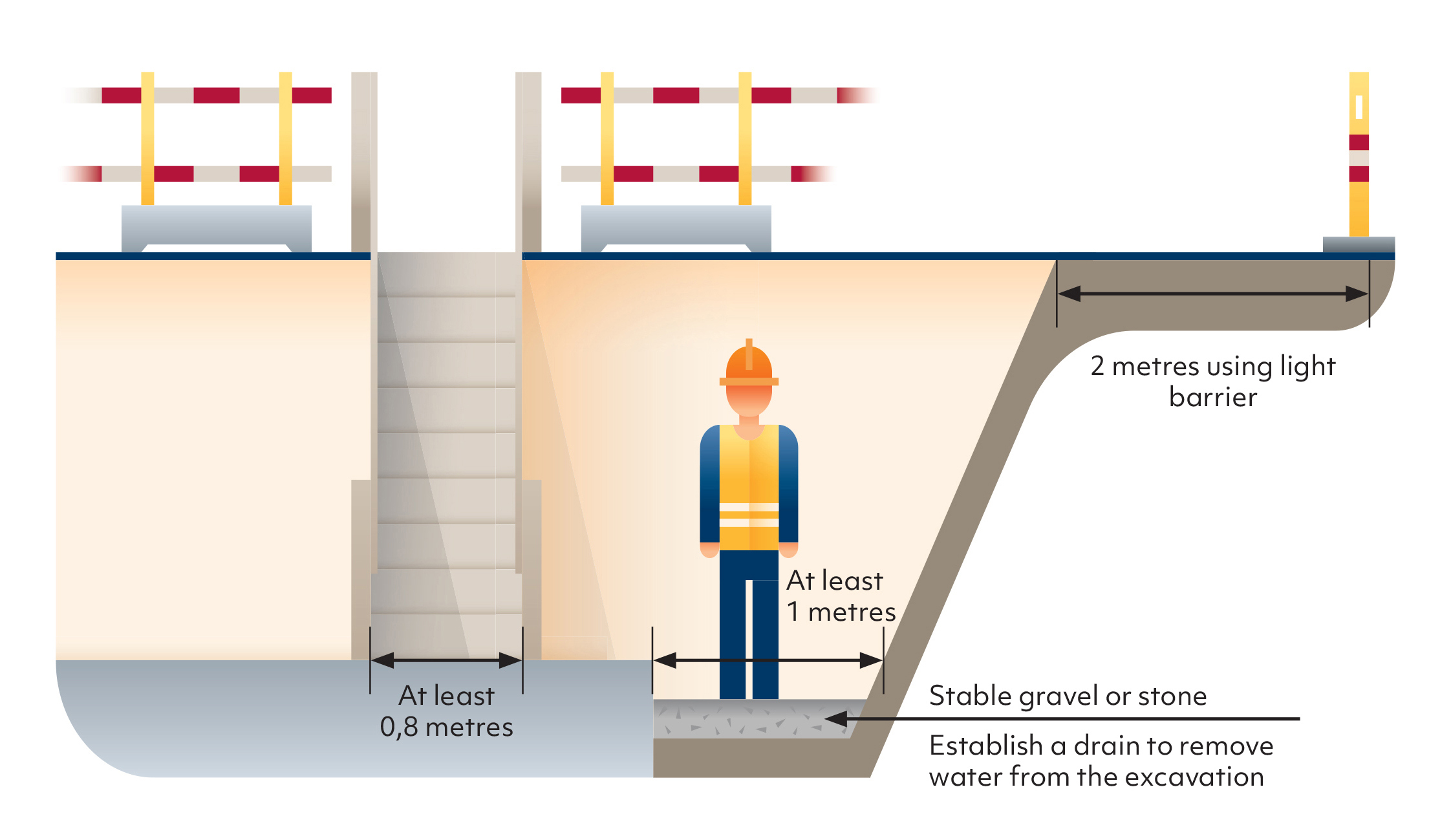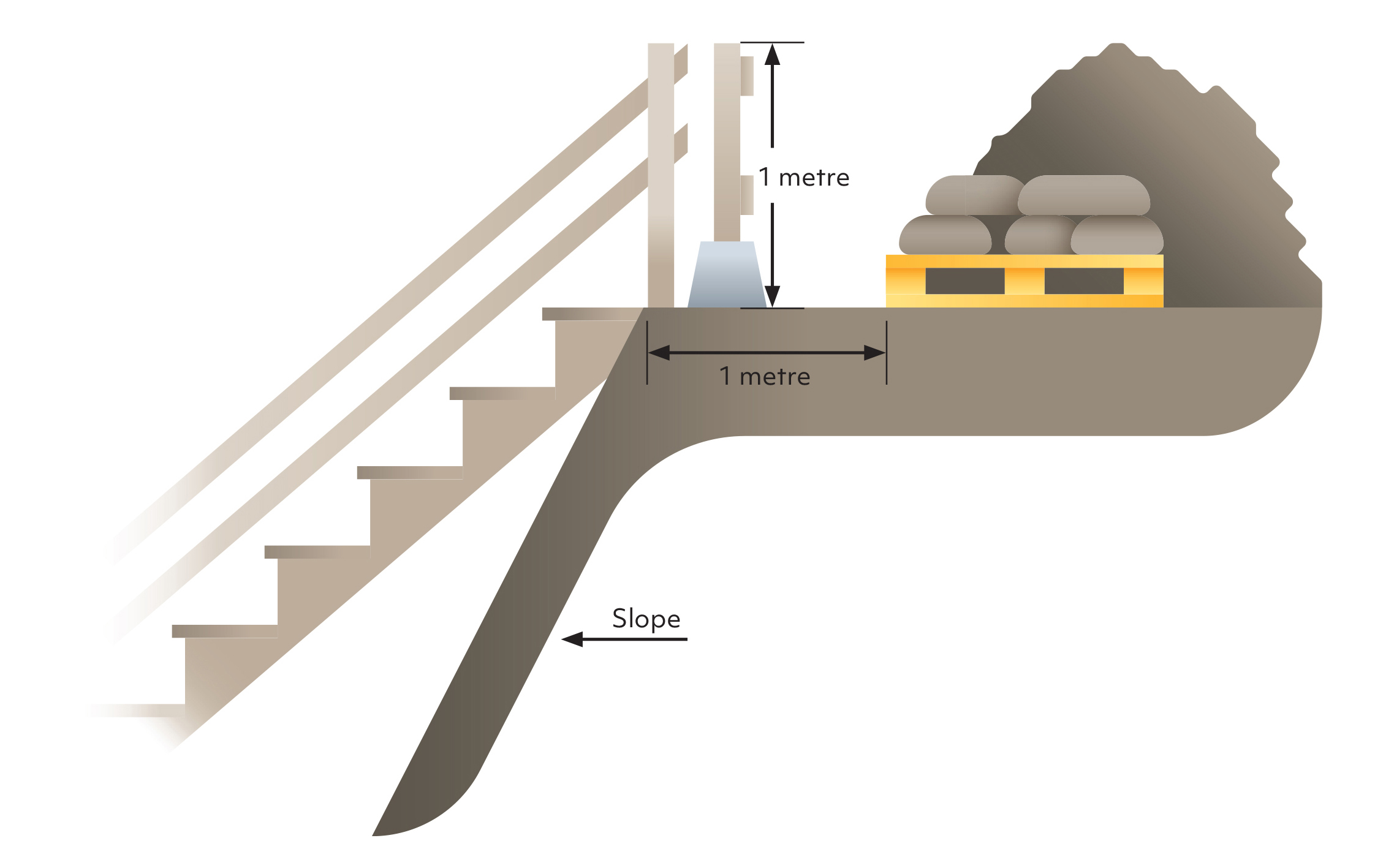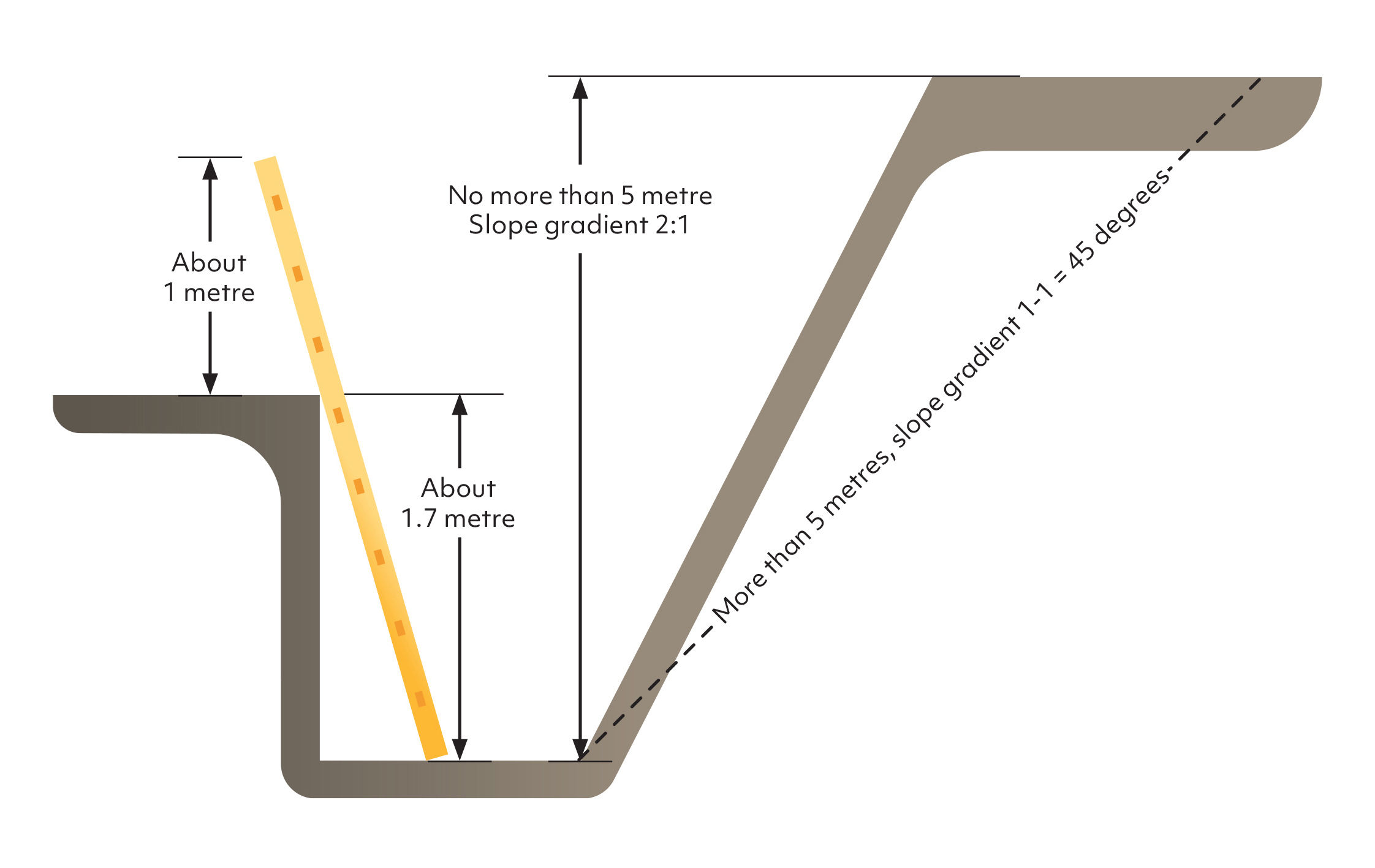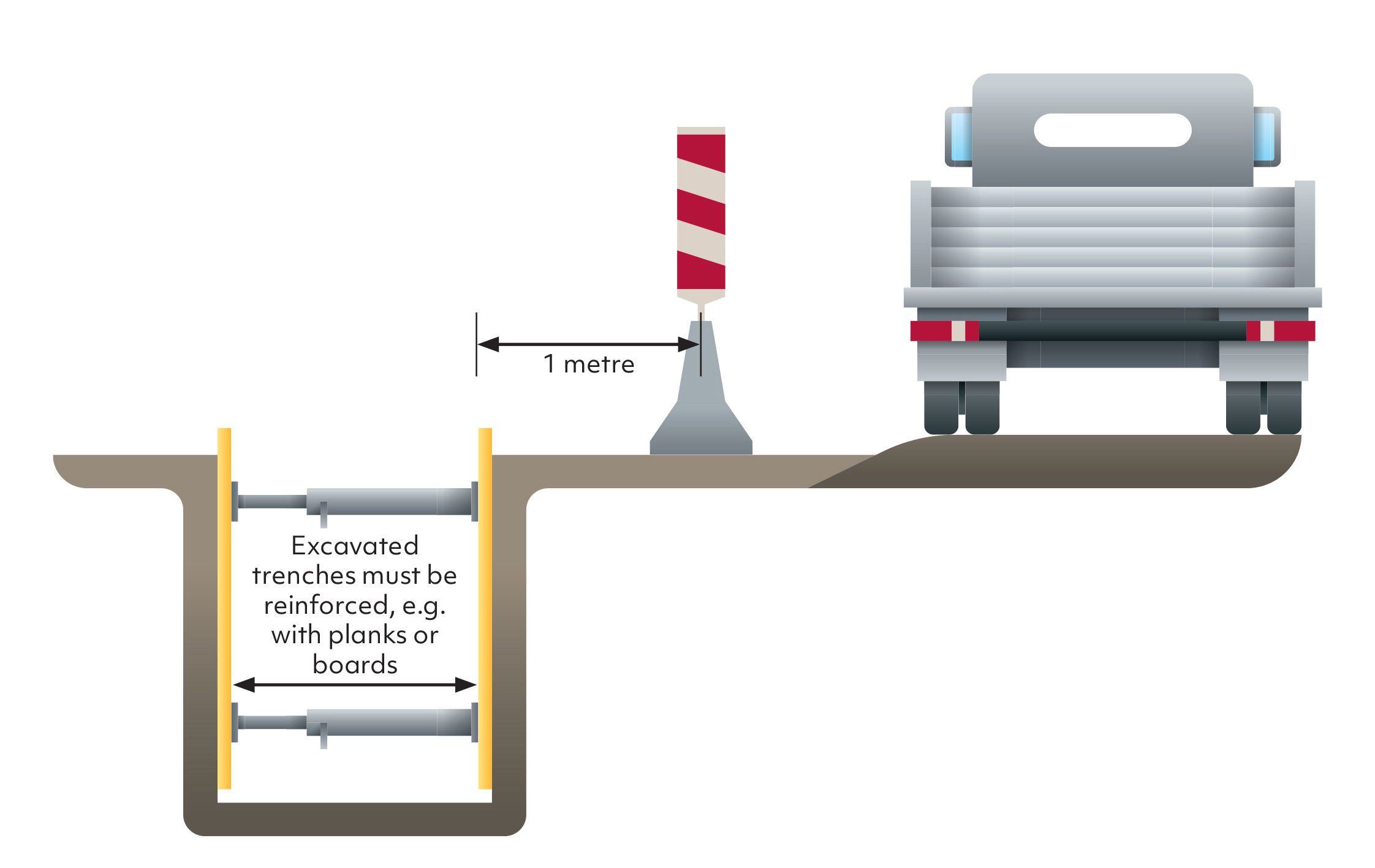Every year, employees are seriously injured or killed during excavation work. Accidents happen, e.g. if the soil collapses, if an employee falls into the excavation or is hit by a truck or an excavator.
The employer is responsible for ensuring that employees are not injured during excavation work. It is important always to excavate with sloping sides to the excavation or to establish reinforcement/shuttering to prevent the soil from collapsing during excavation. Also, make sure that people cannot fall into the excavation. Use railings and establish a proper access route down to the excavation.
Also, pay attention to traffic when excavating. Trucks and other excavators should not be near the work area. If this cannot be avoided, use free zones, traffic barriers, speed limits and road marking to prevent people from being run over by a vehicle.
Read below about how to carry out work safely.

Access and escape routes should be via an at least 0.8-metre-wide stairway with hand and knee rails on both sides.
In order to prevent people from falling into the excavation, you need to cordon off the excavation. Set up railings along the edges or cones with chains at least 2 metres from the edge. People must not have access to the areas between the excavation and the cordoning-off barriers.
At the bottom of the excavation, you must establish a drain and a drainage layer of gravel or stone to drain off water.
Note that the work area at the bottom of the excavation must be at least 1 metre wide.

Set up railings at least 1-metre high with hand, knee and foot rails around the entire excavation. Make sure to keep the edges of the excavation free of tools, material and excavated soil for a distance of at least 1 metre.

The sides of the excavation must always be reinforced or sloped. Vertical sides are only acceptable if the depth of the excavation is less than 1.7 metres, if soil investigations have been carried out, and if you are not to work in a kneeling position.
When working in excavations for pipes or cables, make sure that the work can be carried out in appropriate work postures.
For district heating pipes, you must establish welding sites with at least 0.6 metres on each side of the pipe, and with a length of at least 1 metre on each side of the joint. Furthermore, there should be a depth of at least 0.7 metres under the pipes.

There must be at least 1 metre between trafficked areas on the construction site and the excavation. You also need to ensure that vehicles cannot drive into the excavation, e.g. through speed limits or barriers.
Make sure to reinforce the excavation, e.g. using boards and planks to prevent the soil from collapsing.





